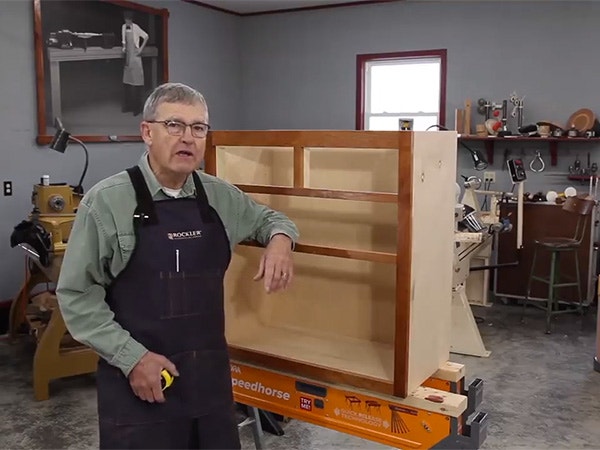Video: Introduction to Cabinet Building

Learn a brief history of modern cabinet construction and the benefits of designing and building your own cabinets.
Building kitchen cabinets is a great opportunity to apply your woodworking skills, learn new techniques, add value to your home and make the time your family spends in the kitchen more enjoyable. Building your own cabinets also gives you the design control to create a kitchen that will work best for your needs. The type of cabinets that you build will depend on your style preferences, the tools you have and your skill level. No matter what type or style of cabinet you choose to build, the rewarding process of building your new kitchen cabinets is sure to involve many interesting woodworking techniques and tools.
Video: Introduction to Building Cabinets - Video Transcript
Ernie Conover: Hi, I'm Ernie Conover. Welcome to this primer we've put together on building your own kitchen cabinets. I'm going through the process, right now, of building a new kitchen for my wife, Susan. I built our original kitchen about 35 or 40 years ago and we decided it's time to spruce things up a little.
Building your own kitchen cabinets is a great way to have fun with your hobby, add value to your home and make the cook, be it you or your significant other, very happy. Modern kitchen cabinets are based on what is called the 32 millimeters system. After World War II, Europe was in ruins, and it was realized that a lot of housing was going to have to be built very quickly. You could not build cabinets on site anymore, they had to be built quickly in factories. Man-made materials, what we call sheet goods today, that is plywood, melamine face board, high density fiberboard, medium density fiberboard, all of these materials would be used to crank out cabinets quickly.
At that time the closest together you could put two spindles on a multi-spindle boring machine was 32 millimeters, so that became the standard. In cabinets you buy at box stores or from purveyors of kitchen cabinets are built with very high tech machinery very quickly. However, you can do this yourself in your own shop with some simple jigs and tools, and I'd like to show you some of these in action.
The basis of any kitchen cabinet is a plywood box, three to four sides and a back. There are two types of fronts. There's what are called Euro cabinets which have no face frame they're just a box, and there are face frame cabinets are more popular in the US. I've been saving cherry for about 25 years and I'm using this to build the face frames.
Kitchen cabinets consist of lowers, which are generally 24 inches deep and 34-1/2 inches high. If you add an inch and a half top to that, it puts the counter at 36 inches.
Now, if you're really tall or really short, you can change from that if you build it yourself. You can have it any way you want. You can make the cabinet deeper, you can make it shallower. In fact, this cabinet is a lower but it is for a bar in our new kitchen and I made it 15 inches deep.
I'd now like to offer a bit of free advice. It's free so it may be worth what you're paying for it, but if you're going to go to the trouble to build a kitchen, unless money is a real object, don't waste your time using medium density or high density fiber board or melamine face board, use veneer core plywood. It's beautiful material to work with, much easier to work with than the former materials. It holds screws and nails much better. It's just a pleasure to work with, good material. If you should ever have a pipe burst or water going to your cabinet, it'll come back smiling while the former materials will not.
As hand craftsmen, the only thing we have to offer is the finest of workmanship. If we don't use the finest of materials, we're wasting our time, aren't we? It also may seem daunting to build a kitchen, like you'll never be able to do that. Well, it starts with the first cabinet, and the second one gets better and then every one gets easier and you do them faster with each one. You perfect the techniques and pretty soon you'll have a really beautiful kitchen that people will gather in and enjoy and it will add value to your home. Above all, have fun.
Keep the inspiration coming!
Subscribe to our newsletter for more woodworking tips and tricks
